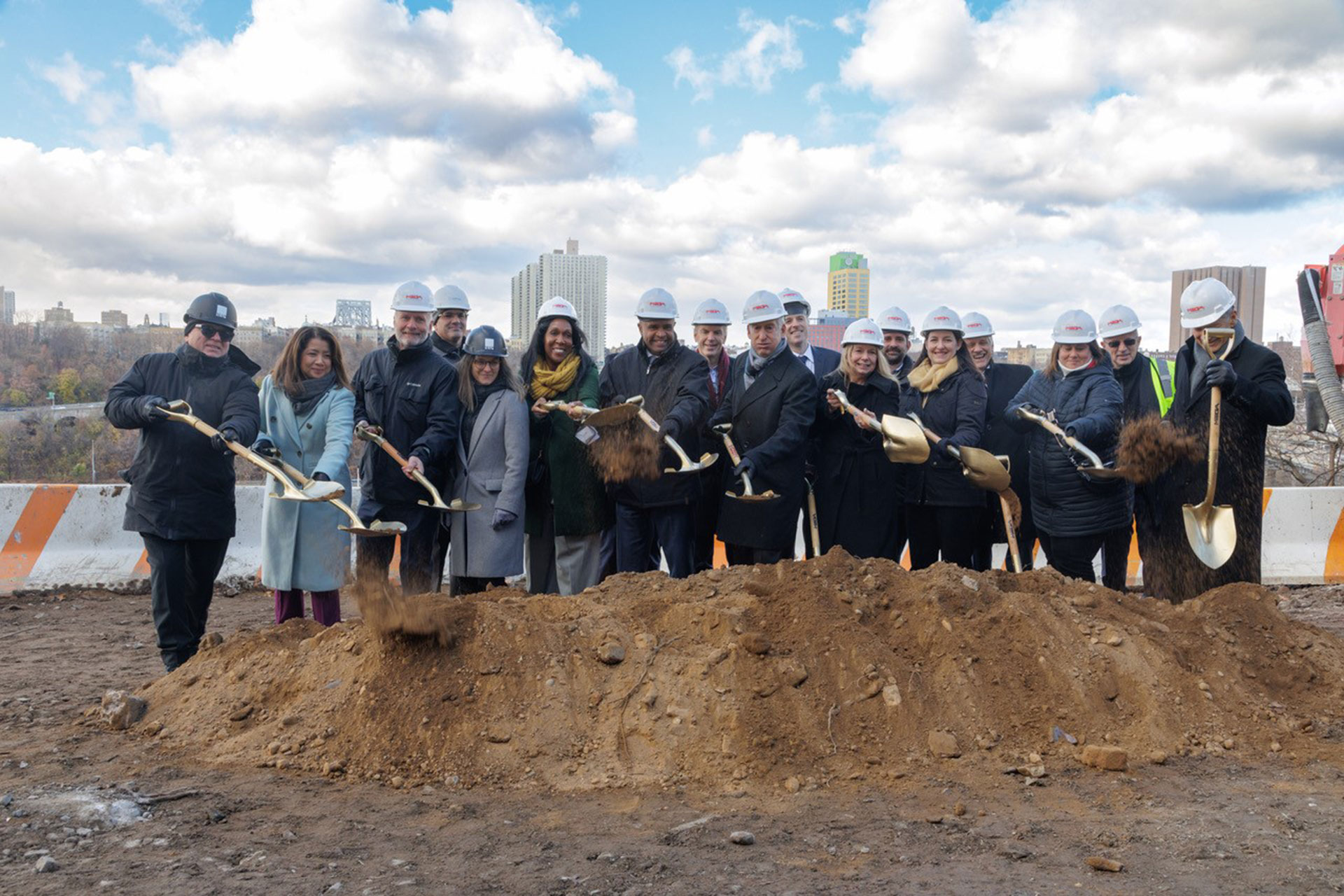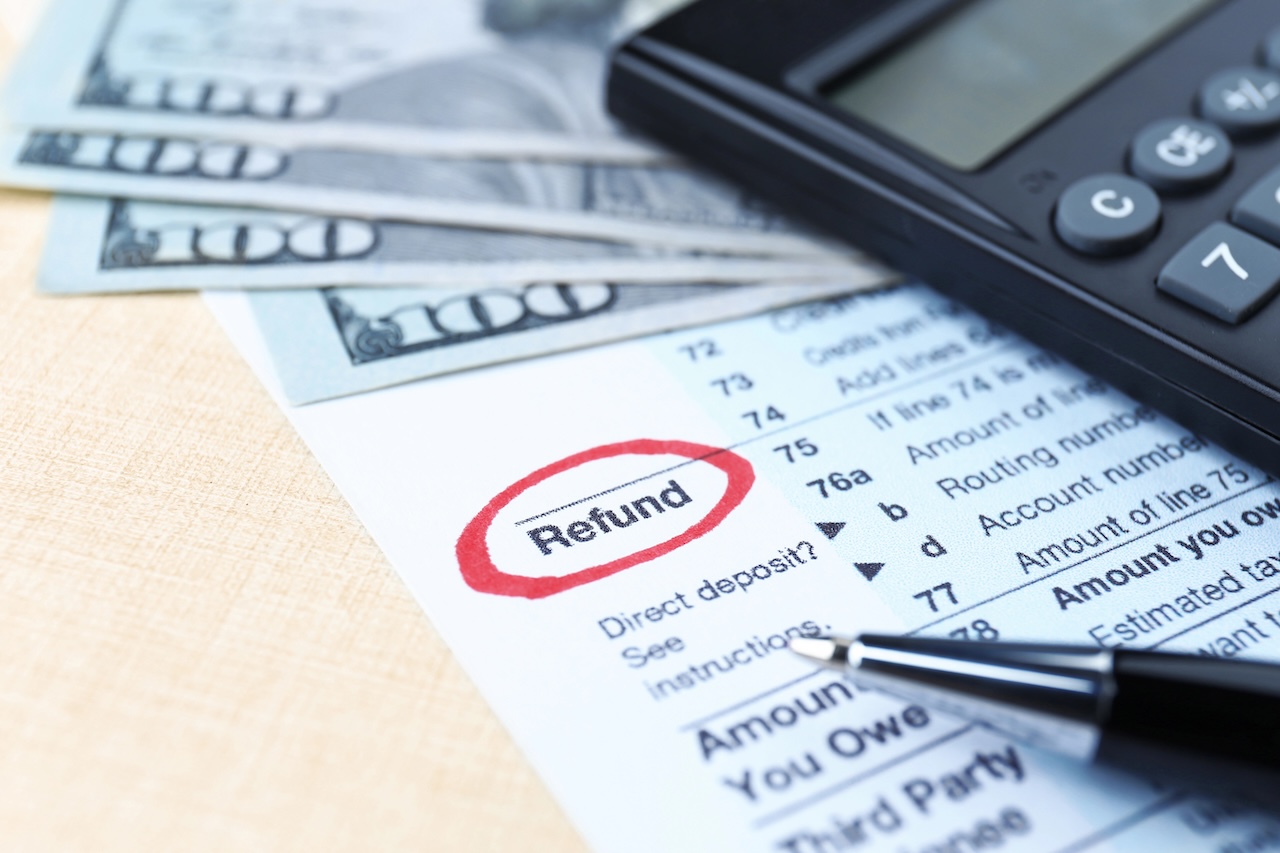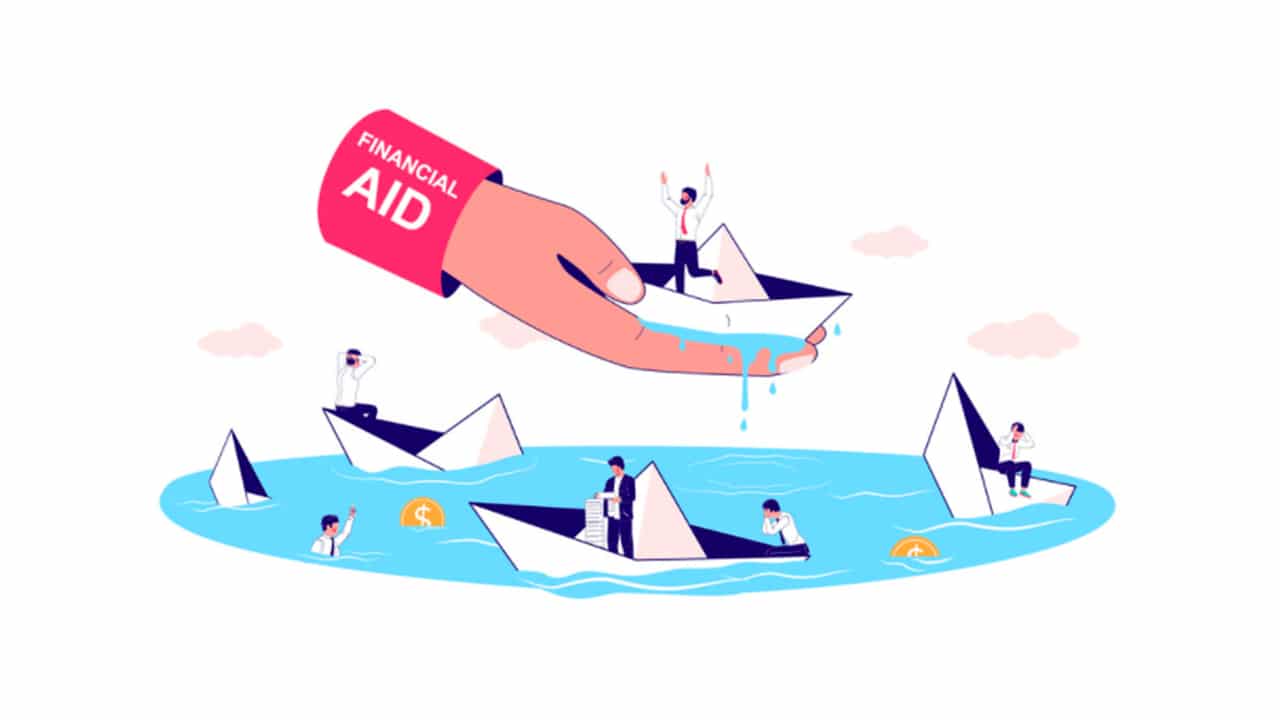Could greater secondary market access help CDFIs meet growing demand?


Breaking ground for the Highbridge project in the Bronx, New York. Leviticus Fund, a CDFI loan fund, extended early financing to help Samaritan Daytop Village get to construction closing on the Highbridge building, which will provide 422 affordable supportive housing units in the Bronx.
Photo credit: Nkosi Hamilton Photography & Videography Services.
By Gabriella Chiarenza
Megan Ferguson’s staff teases her that she never says no. But as CEO of Impact Development Fund, a Colorado-based community development financial institution (CDFI) loan fund, Ferguson’s aim is to get as many of the community investment ideas proposed to her organization as possible to yes.
“We’re really good at distributing capital into the hands of underserved communities,” she said. “We ask, how can we bridge the space between what a traditional lender is comfortable with and what the community needs?”
As mission-driven organizations that lend to nontraditional borrowers, CDFIs have seen community requests for their capital surge. “The demand is phenomenal,” said Ferguson. “When we get a sliver of capital, it’s committed within weeks.”
That growing demand has some industry experts exploring whether CDFIs might leverage opportunities to increase available capital through the secondary market.
“Our community development work centers in part on access to capital,” said Jonathan Kivell, director of community investments at the Federal Reserve Bank of New York. “Expanding CDFIs’ ability to serve lower-income areas improves their borrowers’ access to loans needed to buy a home, start a small business, or finance the construction of a new property.”
“We’re really good at distributing capital into the hands of underserved communities. We ask, how can we bridge the space between what a traditional lender is comfortable with and what the community needs?”
– Megan Ferguson, CEO, Impact Development Fund
To better understand the opportunities and challenges around increased CDFI secondary market activity, the New York Fed’s community development team conducted research and convened roundtable discussions with CDFIs, investors, industry analysts, and other stakeholders.
“The roundtables have been a good opportunity to better understand what we couldn’t probe in the data,” said Carmi Recto, a community development specialist at the New York Fed. “We wanted to learn from people at the institutions actually doing the work.”
Two New York Fed studies found that CDFIs’ total assets tripled to more than $450 billion between 2018 and 2022. In this same period, CDFIs originated at least $67 billion in loans and sold at least $14.2 billion in loans on the secondary market.
The Fed surveys CDFIs every two years to learn more about their experiences. Responses from 448 CDFIs to the 2025 CDFI Survey reflect both this rapid industry growth and related limitations. More than 70 percent of respondents reported increased demand for their loan products. Yet just 33 percent said they were fully able to meet this demand.
With a growing mismatch between their available lending capital and demand for their loans, some CDFIs have explored selling loans on the secondary market as one way to free up additional capital on their balance sheets.
More than 20 percent of 2025 CDFI Survey respondents had sold loans over the course of 2023 and 2024. Of those who responded to a question asking whether their organization considered selling loans as a potential funding strategy, nearly 40 percent said yes.
“CDFIs often make bespoke loans that don’t fit into a neat credit box. For an investor to want to buy a loan, it has to fit into some kind of box. It has to be accompanied by robust data about the loan’s structure and performance that allows an investor to do their due diligence. Investors really want that, and CDFIs don’t always have it.”
– Jacob Scott, community development analyst, Federal Reserve Bank of New York
Examining a wide range of CDFI loan sale data sources, the New York Fed found that between one-third to one-half of all CDFIs sold at least one loan to a third party. Most are doing so on a small scale, occasionally selling single-family mortgage loans.
Single-family mortgage loans comprise an existing secondary market sales option for CDFIs. These loans tend to be fairly standardized in their underwriting and documentation, with ample data available. The New York Fed’s roundtables have focused instead on exploring considerations around emerging secondary markets for CDFIs, such as loans for multifamily affordable housing.
Just 10 CDFIs accounted for 75 percent of the total CDFI loan volume sold on the secondary market, according to the May 2024 New York Fed study. For other CDFIs, selling loans more regularly or in larger volumes on the secondary market might seem on the surface to be a mismatch with who CDFIs are, what they do, and how they do it.
For more information on Community Development Financial Institutions check out the New York Fed’s podcast series on CDFIs. This series explores what CDFIs are, their role in strengthening communities, and how their work aligns with the New York Fed community development team’s mission to connect new sources of capital to meet community needs.
“Meeting the borrower where they’re at is core to CDFIs’ ethos,” said Recto. “Based on what we’ve heard from CDFI loan funds we’ve spoken to, part of their hesitation in getting into the secondary market is that they would have to give up at least some of that flexibility.”
Adaptable loan servicing is a central feature of the CDFI business model. Other lenders tend to hold borrowers to strict payment dates and must adhere to firm requirements around loan performance reporting and loan extensions or changes.
CDFIs know their borrowers well and work closely with them over the life of the loan. They are unique lenders that often have the flexibility to adjust payment dates or lengthen loan terms to meet the needs of their nontraditional borrowers’ situations.
“Talking with borrowers on what assistance they need or when they’re going to get paid back so they can repay their own loans is part of why CDFIs’ asset qualities are so strong and their delinquencies are so low,” said David Greenblatt, director and lead analyst at S&P, which has provided public credit ratings to 15 CDFIs. “They try to position their financials in a way that they’re going to meet the financial component of their mission in addition to the social.”
If CDFIs choose to sell loans on the secondary market, they may expect to adhere to stricter requirements common to more traditional loans.
“CDFIs often make bespoke loans that don’t fit into a neat credit box,” said New York Fed community development analyst Jacob Scott. “For an investor to want to buy a loan, it has to fit into some kind of box. It has to be accompanied by robust data about the loan’s structure and performance that allows an investor to do their due diligence. Investors really want that, and CDFIs don’t always have it.”
Compared to their more typical bespoke loans, many CDFIs originate a relatively low volume of more standardized loans. That can make it more difficult for CDFIs to attract secondary market investor interest. Scott noted that a CDFI loan fund may have a $5 million pool of loans it wishes to sell on the secondary market. But some investors seek to purchase loan pools at a minimum of $50 million or $100 million.
“Meeting the borrower where they’re at is core to CDFIs’ ethos. Based on what we’ve heard from CDFI loan funds we’ve spoken to, part of their hesitation in getting into the secondary market is that they would have to give up at least some of that flexibility.”
– Carmi Recto, community development specialist, Federal Reserve Bank of New York
Challenges and concerns remain around increasing CDFIs’ secondary market activity on a broader scale. Many CDFIs are small and may not have the capacity to take on the added load of offering new loan products better suited to the secondary market.
“One thing that’s always top of mind for CDFIs is the lift,” said Ferguson. “When it comes to the reporting, what does the data submission every month, every quarter, every year look like in order to access this capital? We’ve had to build out operational staff specifically for data and reporting.”
Given the added capacity needed to cover secondary market associated responsibilities, she added, “by nature, you start to exclude some of the smaller CDFIs.”
Some CDFIs also express concern that greater involvement with the secondary market could shift their focus away from being responsive to borrowers others might not.
“Will we find ourselves in a restrictive covenant that we will not be able to get out of that will prevent us from serving our community? Coming up with innovative solutions is about ensuring that the real concerns of CDFIs aren’t going to be buried in the weeds somewhere,” said Mikiyon Alexander, head of coverage at Momentus Securities, a mission-driven investment bank.
Even so, stakeholders noted that tapping into secondary market capital could help CDFIs weather fluctuations in other private, public, and philanthropic funding streams.
“We have been championing this idea of, don’t necessarily change your approach. Just add some new tools to your toolbox so that when we find ourselves in times like this you can take those tools out and say, we’ve been here before, and we can figure out how to continue fostering our mission,” said Alexander.
“We have been championing this idea of, don’t necessarily change your approach. Just add some new tools to your toolbox so that when we find ourselves in times like this you can take those tools out and say, we’ve been here before, and we can figure out how to continue fostering our mission.”
– Mikiyon Alexander, head of coverage, Momentus Securities
Industry experts see promise in interested CDFIs strategically expanding some secondary market loan sales if they can manage the reporting requirements.
“More investors away from the banking sector are saying, ‘I have a certain amount of assets I have discretion over and I want them to go in a community development direction with CDFIs,’” said David Sand, co-chief impact strategist at the investment firm Community Capital Management.
Stakeholders suggest that one approach potentially benefiting both investors and CDFIs could focus on the more standard loans CDFIs might already have on their balance sheets.
“Investors want something that is in a steadier pipeline to make it worth the effort,” said Sand. “The way more wind will get in the sails is by having more comparable financial products.”
For example, consider the capital needed to develop an affordable apartment building subsidized in part by the Low-Income Housing Tax Credit (LIHTC) program. Such projects typically require several different stages of financing to fund the predevelopment, construction, and permanent phases of building and operating the structure.
While CDFI loans in the predevelopment and construction phases of these projects tend to be highly customized to the particulars of each project, loans supporting the permanent phase tend to be more uniform. Permanent loans fund the operation of the building once construction is complete and tenants have moved into the apartments.
“The permanent lending side is potentially an area that could work for the secondary market,” said Greg Maher, executive director of Leviticus Fund, a New York-based CDFI loan fund. “These projects are through the riskiest phase, which is getting the project built, and they’re leased up. Nationally, the history of LIHTC project defaults in the operating phase is extremely low.”
“If lower-cost capital could come in, I think that would be a huge win for these communities and for residents of LIHTC buildings, which are semi-vulnerable because they can’t raise the rents much,” added Maher.
“The plus side is a lot more capital to a sector that has grown tremendously but is still overwhelmed with demand. At the end of the day, that’s why we would want a secondary market involved: to make a difference in the lives of these individuals and families.”
– Greg Maher, executive director, Leviticus Fund
Industry experts said familiarizing investors with CDFIs’ unique lending approach would be vital to the success of any secondary market expansion. They noted that means inviting investors to visit the development projects, meet borrowers, and learn more about CDFIs’ lending successes.
“It’s really less about educating CDFIs for the capital market space and more about educating investors on CDFIs,” said Alexander.
The Fed continues to play a unique host role in these conversations. Kivell said the neutral setting allows a diverse group of stakeholders from the CDFI industry, secondary market investors, and other interested parties to explore the issue openly.
“When the community development team convenes folks to hear challenges that CDFIs are going through or strengths they may be experiencing, it helps us learn from the conversation and share our analysis with industry participants,” said Greenblatt of S&P. “Being part of the conversation helps us understand these entities more.”
“We say that we just put out coffee and danish and let people talk,” Kivell said. “The willingness we’ve seen from CDFIs and capital markets participants to come to the New York Fed and have these discussions shows the momentum building with these discussions.”
“Expanding CDFIs’ ability to serve lower-income areas improves their borrowers’ access to loans needed to buy a home, start a small business, or finance the construction of a new property.”
– Jonathan Kivell, director of community investments, Federal Reserve Bank of New York
CDFI industry stakeholders said they are interested in continuing the conversations. Cautioning that many questions remain around CDFIs expanding their secondary market activity, Maher and Ferguson acknowledged there may be advantages.
“The plus side is a lot more capital to a sector that has grown tremendously but is still overwhelmed with demand,” said Maher. “We have a $100 million pipeline right now from initial inquiries all the way down to applications in the door. We don’t have $100 million of capital.”
“I think the secondary markets would really unlock that bigger scale,” said Ferguson. “The projects are there. It’s about how we can support them to make sure they reach completion and are successful.”
CDFI stakeholders said they’re keeping a central goal in mind as the industry considers any broader secondary market activity: soundly growing their organizations’ ability to fund more of the investments their communities want and need.
“At the end of the day, that’s why we would want a secondary market involved,” said Maher. “To make a difference in the lives of these individuals and families.”

Tax refunds in early 2026 could be $1,000 to $2,000 larger for many households due to retroactive tax law changes....

Why does it feel like large companies always get the upper hand? Maybe it’s the long contracts with fine print,...

What can you do if you can’t afford college? Maybe the financial aid award wasn’t enough, or you only want...